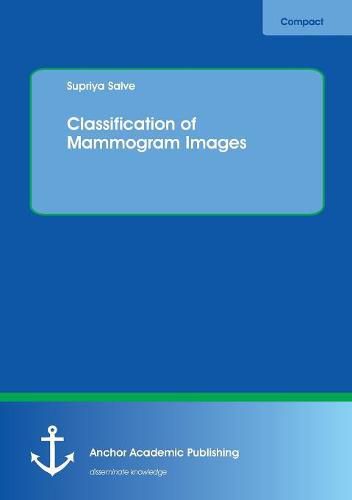Readings Newsletter
Become a Readings Member to make your shopping experience even easier.
Sign in or sign up for free!
You’re not far away from qualifying for FREE standard shipping within Australia
You’ve qualified for FREE standard shipping within Australia
The cart is loading…






This title is printed to order. This book may have been self-published. If so, we cannot guarantee the quality of the content. In the main most books will have gone through the editing process however some may not. We therefore suggest that you be aware of this before ordering this book. If in doubt check either the author or publisher’s details as we are unable to accept any returns unless they are faulty. Please contact us if you have any questions.
Breast cancer is the most common type of cancer in women, which also causes the most cancer deaths among them today. Mammography is the only reliable method to detect breast cancer in the early stage among all diagnostic methods available currently. Breast cancer can occur in both men and women and is defined as an abnormal growth of cells in the breast that multiply uncontrollably. The main factors which cause breast cancer are either hormonal or genetic. Masses are quite subtle, and have many shapes such as circumscribed, speculated or ill-defined. These tumors can be either benign or malignant. Computer-aided methods are powerful tools to assist the medical staff in hospitals and lead to better and more accurate diagnosis. The main objective of this research is to develop a Computer Aided Diagnosis (CAD) system for finding the tumors in the mammographic images and classifying the tumors as benign or malignant. There are five main phases involved in the proposed CAD system: image pre-processing, extraction of features from mammographic images using Gabor Wavelet and Discrete Wavelet Transform (DWT), dimensionality reduction using Principal Component Analysis (PCA) and classification using Support Vector Machine (SVM) classifier.
$9.00 standard shipping within Australia
FREE standard shipping within Australia for orders over $100.00
Express & International shipping calculated at checkout
This title is printed to order. This book may have been self-published. If so, we cannot guarantee the quality of the content. In the main most books will have gone through the editing process however some may not. We therefore suggest that you be aware of this before ordering this book. If in doubt check either the author or publisher’s details as we are unable to accept any returns unless they are faulty. Please contact us if you have any questions.
Breast cancer is the most common type of cancer in women, which also causes the most cancer deaths among them today. Mammography is the only reliable method to detect breast cancer in the early stage among all diagnostic methods available currently. Breast cancer can occur in both men and women and is defined as an abnormal growth of cells in the breast that multiply uncontrollably. The main factors which cause breast cancer are either hormonal or genetic. Masses are quite subtle, and have many shapes such as circumscribed, speculated or ill-defined. These tumors can be either benign or malignant. Computer-aided methods are powerful tools to assist the medical staff in hospitals and lead to better and more accurate diagnosis. The main objective of this research is to develop a Computer Aided Diagnosis (CAD) system for finding the tumors in the mammographic images and classifying the tumors as benign or malignant. There are five main phases involved in the proposed CAD system: image pre-processing, extraction of features from mammographic images using Gabor Wavelet and Discrete Wavelet Transform (DWT), dimensionality reduction using Principal Component Analysis (PCA) and classification using Support Vector Machine (SVM) classifier.